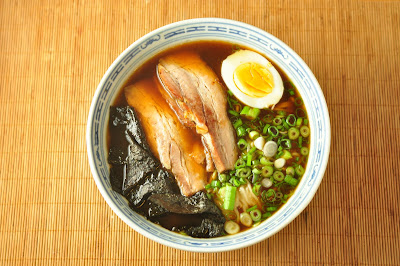The August 2011 Daring Bakers’ Challenge was hosted by Lisa of Parsley, Sage, Desserts and Line Drive and Mandy of What the Fruitcake?!. These two sugar mavens challenged us to make sinfully delicious candies! This was a special challenge for the Daring Bakers because the good folks at http://www.chocoley.com offered an amazing prize for the winner of the most creative and delicious candy!
Oh, boy. This month’s Daring Bakers’ challenge was a doozie. Candies, including one mandatory chocolate candy. Everyone knows working with chocolate is a bitch on any given day, but working with chocolate on a humid summer day? Really? Not to mention boiling sugar and the like…

Ok, I’m done with the complaining… at least for now. The truth is, even though there were many reasons to skip this challenge, there were also plenty of reasons to go for it. One of them being the amount of work our hostesses put into it: the instructions were so detailed and they left us so many recipes and options, I would’ve felt bad wimping out just because “chocolate is hard.” And another reason was… well, precisely that chocolate is hard. It’s a challenge, one that I was supposed to tackle a long time ago.
A few years back, Laurent’s dad was preparing a conference on chocolate, and we all got dragged into the research and trivia. We were all kind of obsessed with it, really. That’s how I got to be fairly well informed about the tempering process. Tempering consists in melting chocolate, cooling it down to a certain temperature, then heating it back up slightly. The aim is to obtain a specific type of crystallisation, which leads to a finished chocolate that is smoother, snappier, and shinier. Yup, I knew all about tempering… but I’d never actually done it. This was because I also knew how difficult it is to control the temperature of chocolate.

So, with that in mind, I started off with a non-chocolate candy: pâte de fruits. I’ve always liked these chewy squares of fruit paste, and the recipe looked pretty simple. I made a citrus grapefruit version, although the pink coloring I used makes it look more like strawberry. Unfortunately, I was pretty disappointed by my result. Maybe I didn’t use enough pectin, but my pâte de pamplemousse never solidified as much as I would have liked. I had to store it in the fridge, and it didn’t have that satisfying chewiness I love. Also, the humidity made it absorb too much sugar, making it too sweet.

With that, I decided to man up and tackle the chocolate. Truffles would have been an easy way out, as Laurent and I often make truffles in the winter. But if I was doing this, I was doing it right. I decided to make bonbons with a caramel filling: they would highlight the tempered chocolate, and allow me to use those cute little moulds we’d bought during our chocolate obsession. With a good supply of Alto El Sol chocolate disks of the Barry brand and a marble slab which was graciously given to us a while back, I was ready.

As predicted, it was difficult and frustrating. I waited until all the chocolate had melted in the double boiler to test the temperature, only to find that it was already past the recommended limit. I then transferred most of the chocolate to the marble slab, and started spreading it and flipping it around. But the temperature simply refused to drop lower than 28.5ºC, even going back up at times, never anywhere near the required 27 ºC. Finally, I got bored and decided that this would have to do. I put the chocolate back over barely simmering water, and this time the temperature shot back up and was past its limit before I could do anything. That’s when I stopped using the thermometer, as it was seriously screwing with my mind.
Moulding the bonbons was an exercise in frustration as well. Despite being apparently too hot, the chocolate was thick, and didn’t spread very well. Next time, I’m definitely using a pastry brush to fill the moulds individually, rather than trying to ladle chocolate over all the cavities: it’ll be slower, but definitely less messy. I’m sure professionals can pull it off, but I’m just not there yet.
Prior to this, I had made a filling of salted caramel (the original recipe was passion fruit, but I didn’t have any on hand). I have a habit of burning caramel, so I was careful this time, and the result was light and liquid – maybe a little too liquid, thus making the moulding even more difficult.

As I waited for the bonbons to set in the fridge, I cleaned up the kitchen, wiping melted chocolate off the counter, floor, walls, stovetop, and fridge handle. I was rather despondent at that point, as I was certain the result was going to be a huge fail. So when I banged the mould on the counter and a perfect, shiny chocolate candy popped out, I cursed in delight – which very rarely happens.
Of course, they didn’t all come out perfect. I’d say about half were edible, the others were either crushed or permanently stuck in the mould. Not great for a pound of chocolate, and I felt saddened by all the wastage. But I vow to be more careful next time, now that I have a better idea of how this works.
My tempering was most definitely not perfect, but it still seemed to have an effect: the chocolate had a distinctive texture as it snapped between my teeth. It remains to be seen whether the nice sheen of the bonbons will last over the days. But still, it’s nice to know all that trouble wasn’t a complete waste of time.

Lisa and Mandy, thank you so much for this challenge. Despite all my complaining, I really am glad that you pushed me to do this. Even though it didn’t go perfectly, tempering chocolate no longer seems like an impossible task.
Please check out the challenge recipes here at the Daring Kitchen, and take a look at the blog roll to see all the cute candies made this month.






















